FEATURES
The Indian film showing the bride’s ‘humiliation’ in arranged marriage
Published
4 months agoon
By
editor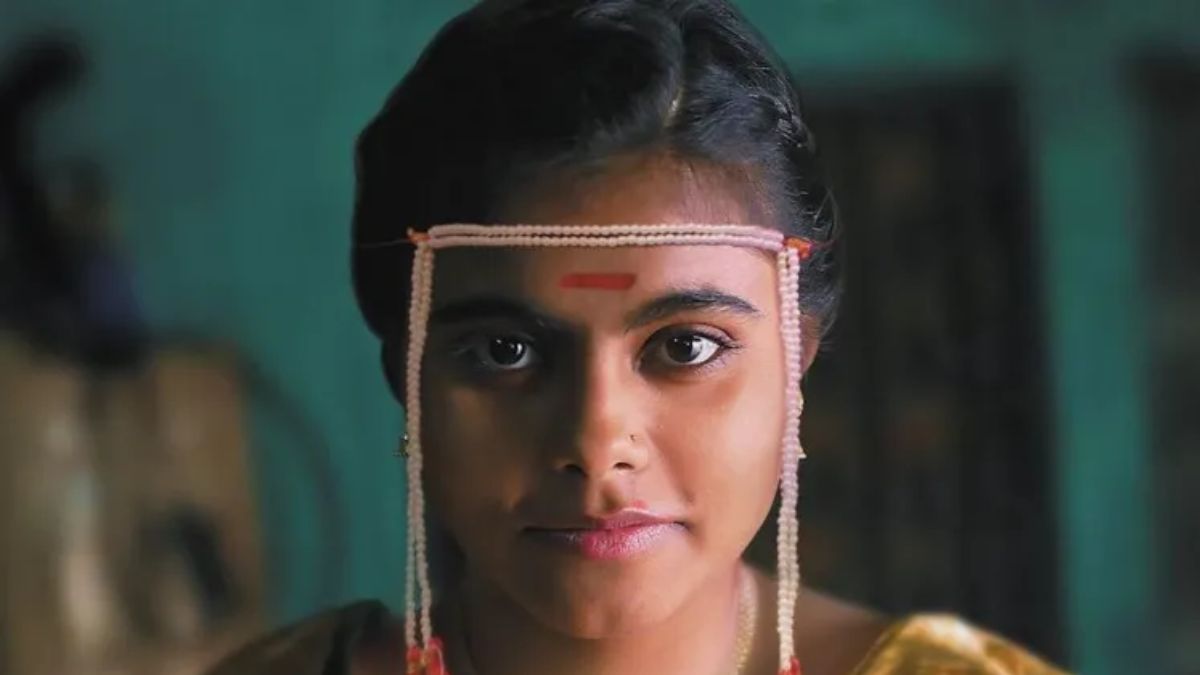
The film centres around Savita, a young woman striving for an education and a career in a patriarchal society
It is often said that marriages are made in heaven.
But in India, where a majority of marriages are arranged, the process of match-making can feel like a passage through hell for a woman and her family.
That’s the premise of Sthal: A Match, the 2023 gritty Marathi-language film that has won several prestigious awards at festivals in India and abroad. It is releasing for the first time in theatres in India on Friday.
Set in rural Maharashtra state, the film centres around Savita, a young woman striving for an education and a career in a patriarchal society, and the attempts by her father Daulatrao Wandhare – a poor cotton farmer – to find a good husband for his daughter.
“He wants a good price for his crop and a good match for his daughter,” says director Jayant Digambar Somalkar.
The film is notable for the unflinching way it portrays what its lead actress calls the “very humiliating” experience of many young women, unlike other Indian movies about arranged marriage.
Sthal has also grabbed attention as its entire cast is made up of first-time actors chosen from the village where it is shot. Nandini Chikte, who plays Savita, has already won two awards for her brilliant performance.

With eyes downcast, Savita sits on a wooden stool facing a group of men who’ve come to assess her for marriage
The film opens with a sequence where Savita is interviewing a prospective groom.
Along with her female relatives and friends, she watches as the young man serves them drinks from a tray. They laugh when he, visibly nervous, fumbles during questioning.
Rudely awakened from what turned out to be a dream, Savita is told to get ready as a group of men are coming to see her.
In reality, the gender roles are completely reversed, and in a scene that’s replayed several times in the nearly two-hour film, Savita’s humiliation comes into sharp focus.
The prospective groom and other men from his family are welcomed by Savita’s father and male relatives. Guests are fed tea and snacks and once the introductions are done, Savita is called in.
Dressed in a sari, with eyes downcast, she sits down on a wooden stool facing her interrogators.
Questions come, thick and fast. What’s your name? Full name? Mother’s clan? Date of birth? Height? Education? Subject? Hobbies? Are you willing to work on the farm?
The men step out, to hold a discussion. “She’s a bit dark. She had makeup on her face, but did you not see her elbow? That is her real colour,” says one. “She’s also short,” he goes on to add. Others nod in agreement.
They leave, telling Daulatrao that they will respond in a few days to let him know their decision.
According to her parents, “this is the fourth or fifth time someone has come to see Savita” – all the earlier meetings have ended in rejection, leading to heartbreak and despair.
The scene rings true. In India, men often have a laundry list of attributes they want in their brides – a glance at the matrimonial columns in newspapers and match-making websites shows everyone wants tall, fair, beautiful brides.

In the film cotton farmer Daulatrao Wandhare (left) and his wife’s main aim in life is to find a good husband for their daughter
Savita’s protestations – “I don’t want to get married, I first want to finish college and then take civil services exams and build a career” – carry no weight in her rural community, where marriage is presented as the only goal worth having for a young woman.
“Marriage is given far too much importance in our society,” Chikte told the BBC. “Parents believe that once the daughter is married, they will become free of their responsibility. It’s time to change that narrative.”
- ‘I have been rejected by dozens of men over dowry’
- India viral wedding ad: The feminist looking for no-farting, no-burping man
She says she found it “very humiliating” that Savita was made to sit on a stool to be judged by all those men who discussed her skin colour, while there was no discussion about the prospective groom.
“I was only acting, but as the film progressed, I lived Savita’s journey and I felt angry on her behalf. I felt insulted and disrespected.”
The film also tackles the social evil that is dowry – the practice of the bride’s family gifting cash, clothes and jewellery to the groom’s family.
Though it has been illegal for more than 60 years, dowries are still omnipresent in Indian weddings.
Parents of girls are known to take out huge loans or even sell their land and house to meet dowry demands. Even that doesn’t necessarily ensure a happy life for a bride as tens of thousands are killed every year by the groom or his family for bringing in insufficient dowries.
In the film too, Daulatrao puts up a “for sale” sign on his land, even though farming is his only source of livelihood.

The film’s entire cast is made up of first-time actors chosen from the village where it is shot
Director Somalkar says the idea for his debut feature film is rooted in his own experience.
Growing up with two sisters and five female cousins, he had witnessed the ritual far too many times when prospective grooms visited his home.
“As a child you don’t question tradition,” he says, adding that the turning point came in 2016 when he accompanied a male cousin to see a prospective bride.
“This was the first time I was on the other side. I felt a bit uncomfortable when the woman came out and sat on a stool and was asked questions. When we stepped out for a discussion, I felt the conversation about her height and skin colour was objectifying her.”
When he discussed the issue with his fiancée at the time – who is now his wife – she encouraged him to explore it in his work.

Writer-director Jayant Digambar Somalkar says the idea for his debut feature film is rooted in his own experience
In a country where 90% of all marriages are still arranged by families, Sthal is not the first to tackle the subject on screen. IMDB has a list of nearly 30 films about arranged marriage made by Bollywood and regional film industries just in the past two decades.
More recently, the wildly popular Netflix show Indian Matchmaking focused entirely on the process of finding the perfect partner.
But, as Somalkar points out, “weddings are hugely glamourised” on screen.
“When we think of weddings in India, we think of the big fat wedding full of fun and glamour. We think of Hum Aapke Hain Koun,” he says, referring to the 1990s Bollywood blockbuster that celebrates Indian wedding traditions.
- The ‘cringeworthy’ Netflix show that is a huge hit
- Indian Matchmaking on Netflix: ‘Sima aunty’ raises eyebrows – again
“And the Netflix show only dealt with a certain class of people, the ones who are wealthy and educated and the women are able to exercise their choice.
“But the reality for a majority of Indians is very different and parents often have to go through hell to get their daughters married,” he adds.
His reason for making Sthal, he says, is to “jolt society and audiences out of complacency.
“I want to start a debate and encourage people to think about a process that objectifies women who have very little freedom to choose between marriage and career,” he says.
“I know one book or one film doesn’t change society overnight, but it can be a start.”
– Geeta Pandey
(BBC News)
You may like
-


Cabinet approval for online traffic fine payment system – Bimal
-
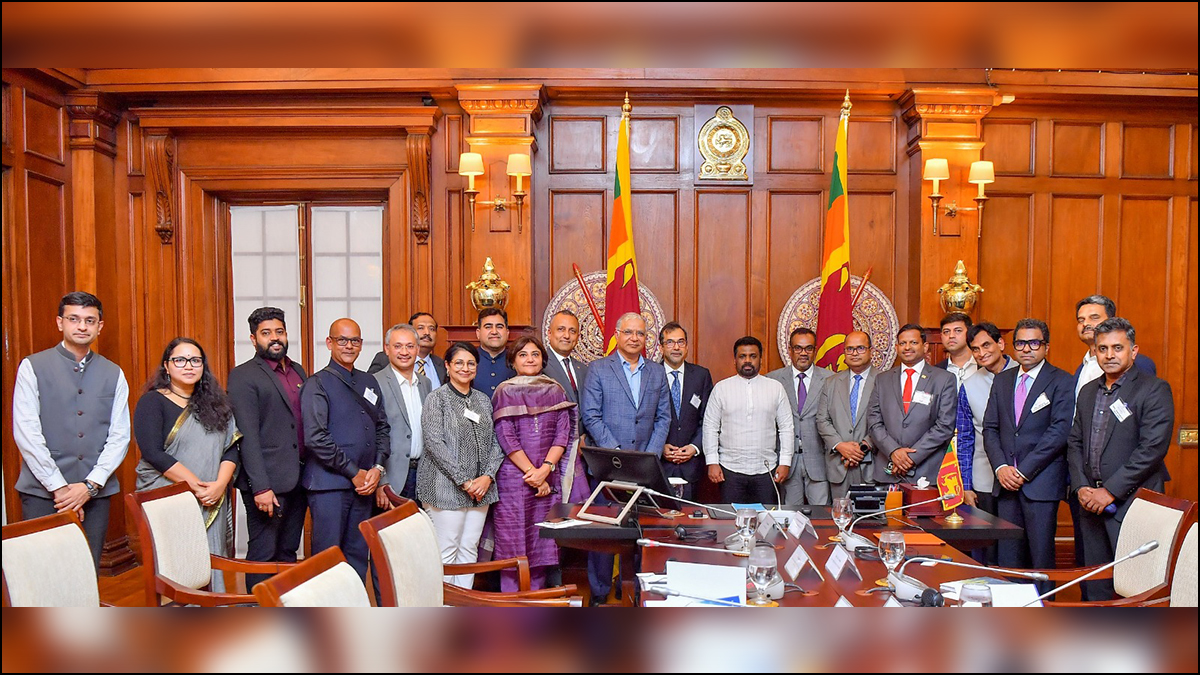

Indian entrepreneur delegation meets President AKD (Pics)
-


NTC approves 0.55% bus fare reduction
-
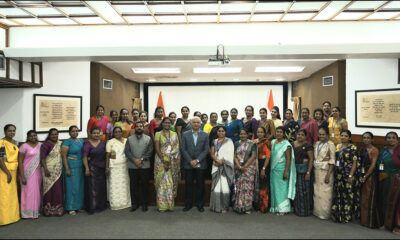

Indian HC meets Hindi teachers selected for training in Agra (Pics)
-
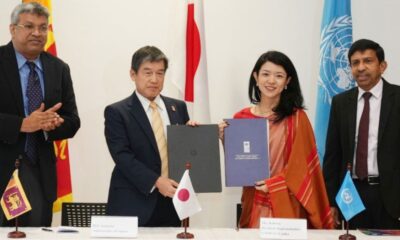

Japan grants US$ 2.5 mn. to SL to strengthen anti-corruption mechanisms
-


3 ex-DMT officials including ex-commissioner, remanded
FEATURES
Asweddumized fields and sizzling kottu roti: New words from Sri Lanka
Published
6 days agoon
June 26, 2025By
editor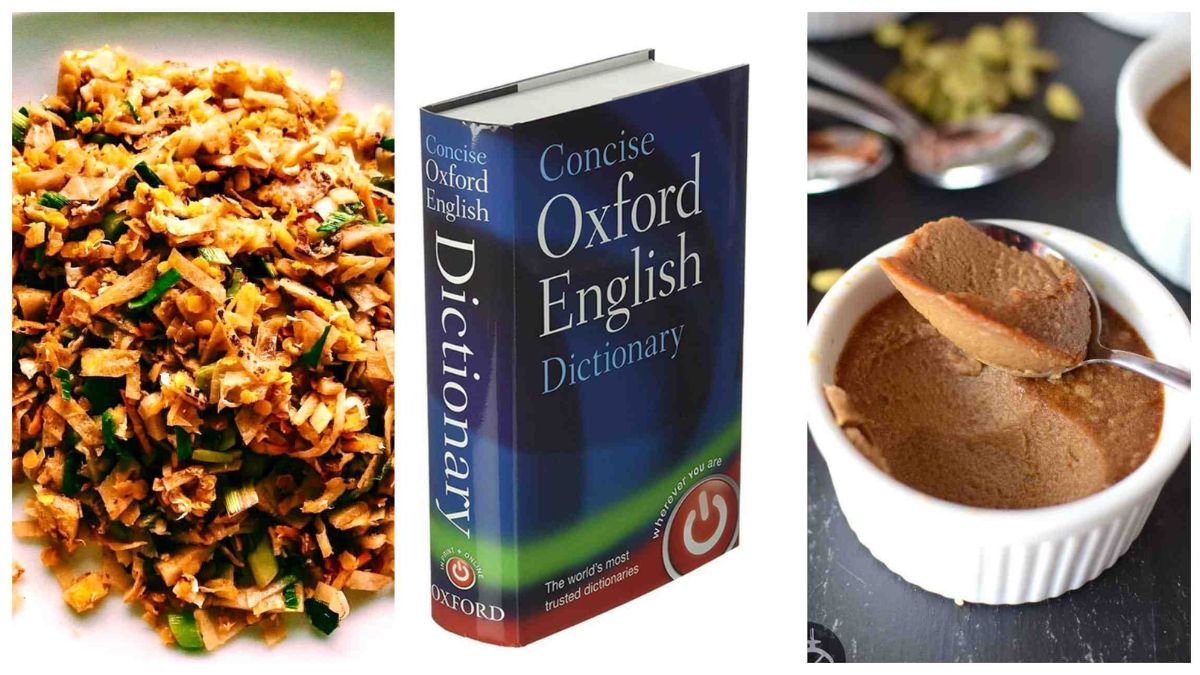
In a letter dated 7 October 1971 and sent from Panadura, Ceylon, OED contributor Pearl Cooray wrote to then Chief Editor Robert Burchfield: ‘I have looked up references for the word asweddumize and have succeeded to a certain extent. The Sinhala word aswedduma means “land recently converted into a paddy field”, and the Anglicized word asweddumize means to prepare a field for sowing paddy’. Cooray was a Sri Lankan academic who visited Burchfield in Oxford earlier in 1971, and upon returning to her country and her position in the Dictionary Department of the University of Ceylon, briefly corresponded with the OED, sending the above quoted letter as well as a selection of Sri Lankan newspapers and magazines for the reading programme for the OED Supplements that were in preparation at the time. Her suggestion for asweddumize would have been too late for the word to be considered for Volume I of the Supplements, so Burchfield wrote the word and definition on a paper slip, the main means by which words were tracked until the 2010s, and filed it alongside an earlier slip from July 1970 with the same suggestion from another Sri Lankan contributor, D. N. Ponnamperuma.
Nothing further is found about asweddumize in the OED’s files until 1986, when botanist D. J. Mabberley, a regular consultant for the Supplement, sent in a quotation slip for the word, which he would have encountered during the time he spent at a university in Sri Lanka. A decade later, another slip records the decision made not to draft an entry for asweddumize due to lack of evidence. ‘Omit (sadly)’was the responsible editor’s regretful note on the slip.
Almost thirty years later, this sad omission has finally been rectified, with the addition of asweddumize to the OED as part of this update. Current OED Sri Lankan English consultant Rochana Jayasinghe’s research on Pearl Cooray and her contributions to the Supplement helped put asweddumize back on the OED’s radar, and now that the dictionary’s editors have wider access to historical and contemporary Sri Lankan sources than their counterparts in the 1970s and 80s, it was possible to find sufficient evidence for the word, including a first quotation from as far back as 1857.
Joining asweddumize among this batch of new words are other borrowings from Sinhala, the Indo-Aryan language primarily spoken by the Sinhalese, the largest ethnic group in Sri Lanka. Mallung (first attested 1893) is lightly cooked, shredded (often leafy green) vegetables mixed with fresh grated coconut, chilli, and other spices, served as a side dish, salad, or condiment as part of a typical Sri Lankan meal, while kiribath (1886) is a Sri Lankan dish made with rice cooked in coconut milk and formed into a block, typically sliced into diamond-shaped pieces and served with various types of onion relish or sweetened with jaggery. Kiribath is traditionally eaten at special occasions such as Avurudu (1881), the first day of the Sinhala and Hindu New Year, occurring on the spring equinox (usually falling around 14 April), marked by a period of celebration typically lasting for seven to ten days.
Other Sri Lankan English words in this update originate both in Sinhala and another widely spoken language on the island, Tamil. Kottu roti (1991) is a Sri Lankan dish consisting of pieces of roti, meat, and vegetables, mixed with spices and curry sauce, and chopped by cleavers as they are cooked on a griddle. It is typically associated with the distinctive sound of the cleavers hitting the griddle as it is prepared by roadside vendors, and its name combines the Tamil word kottu ‘chopped’ with the Sinhala word roṭi ‘bread’. Partly a borrowing from Sinhala and partly a borrowing from Tamil, watalappam (1956) is a custard made from coconut milk (or sometimes condensed milk), cashew nuts, eggs, and spices such as cardamom and cloves, sweetened with jaggery and traditionally eaten by Sri Lankan Muslims during celebrations marking the end of Ramadan.
Sri Lankan music is represented by the words baila (1973) and papare (2006). Baila, a loan word from Portuguese, refers to an uptempo style of popular music originating in Sri Lanka which combines influences from both Africa and Europe, typically played in 6-8 time, with a syncopated rhythm, as well as to the style of dance performed to this music. Often associated with weddings and other celebrations, types of baila music are also popular in Goa and in the city of Mangaluru, on India’s west coast. Papare, on the other hand, is a genre of Sri Lankan music usually played at cricket and other sports matches, characterized by lively rhythms and typically featuring instrumentation of trumpet, saxophone, trombone, and snare and bass drums.
Apart from adding new Sri Lankan English words, OED editors have also revised a number of existing Sri Lankan English entries in the dictionary. Both these new and revised entries have been given transcriptions and audio pronunciations based on a new pronunciation model for Sri Lankan English, which is explained in more detail in this article. These enhancements to the OED’s coverage of Sri Lankan English help provide a more complete picture of how the language is used islandwide.
Full list of World English additions and revisions in the OED June 2025 update
(oed.com)
FEATURES
Dog-sized dinosaur that ran around feet of giants discovered
Published
7 days agoon
June 25, 2025By
editor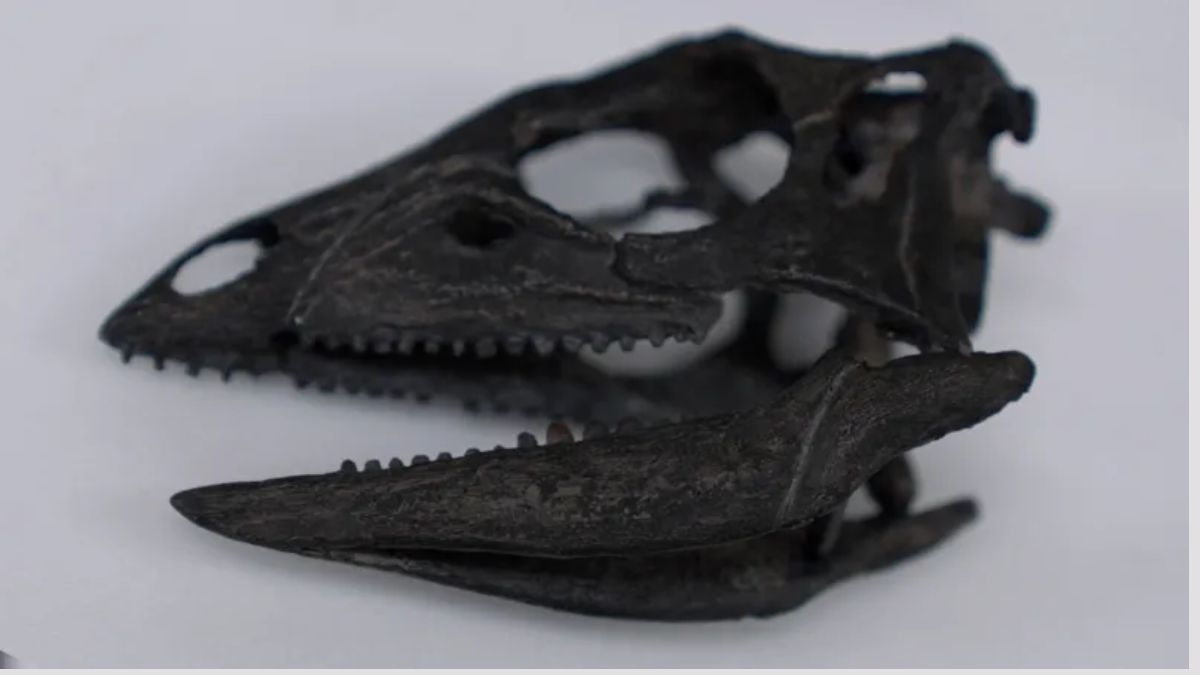
The full name of the new species is Enigmacursor mollyborthwickae dinosaur
A labrador-sized dinosaur was wrongly categorised when it was found and is actually a new species, scientists have discovered.
Its new name is Enigmacursor – meaning puzzling runner – and it lived about 150 million years ago, running around the feet of famous giants like the Stegosaurus.
It was originally classified as a Nanosaurus but scientists now conclude it is a different animal.
On Thursday it will become the first new dinosaur to go on display at the Natural History Museum (NHM) in London since 2014.
BBC News went behind the scenes to see the dinosaur before it will be revealed to the public.
The discovery promises to shed light on the evolutionary history that saw early small dinosaurs become very large and “bizarre” animals, according to Professor Paul Barrett, a palaeontologist at the museum.
When we visit, the designer of a special glass display case for the Enigmacursor is making last-minute checks.
The dinosaur’s new home is a balcony in the museum’s impressive Earth Hall. Below it is Steph the Stegosaurus who also lived in the Morrison Formation in the Western United States.
Enigmacursor is tiny by comparison. At 64 cm tall and 180 cm long it is about the height of a labrador, but with much bigger feet and a tail that was “probably longer than the rest of the dinosaur,” says Professor Susanna Maidment.

The Enigmacursor was a small dinosaur that lived alongside some of the biggest known
“It also had a relatively small head, so it was probably not the brightest,” she adds, adding that it was probably a teenager when it died.
With the fossilised remains of its bones in their hands, conservators Lu Allington-Jones and Kieran Miles expertly assemble the skeleton on to a metal frame.
“I don’t want to damage it at this stage before its revealed to everybody,” says Ms Allington-Jones, head of conservation.

Conservators Lu Allington-Jones and Kieran Miles assembled the dinosaur onto a frame for display
“Here you can see the solid dense hips showing you it was a fast-running dinosaur. But the front arms are much smaller and off the ground – perhaps it used them to shovel plants in its mouth with hands,” says Mr Miles.
It was clues in the bones that led scientists at NHM to conclude the creature was a new species.
“When we’re trying to identify if something is a new species, we’re looking for small differences with all of the other closely-related dinosaurs. The leg bones are really important in this one,” says Prof Maidment, holding the right hind limb of the Enigmacursor.
When the dinosaur was donated to the museum it was named Nanosaurus, like many other small dinosaurs named since the 1870s.
But the scientists suspected that categorisation was false.
To find out more, they travelled to the United States with scans of the skeleton and detailed photographs to see the original Nanosaurus that is considered the archtype specimen.
“But it didn’t have any bones. It’s just a rock with some impressions of bone in it. It could be any number of dinosaurs,” Professor Maidment said.

Susanna Maidment travelled to the US to look at the original Nanosaurus dinosaur
In contrast, the NHM’s specimen was a sophisticated and near-to-complete skeleton with unique features including its leg bones.
Untangling this mystery around the names and categorisation is essential, the palaeontologists say.
“It’s absolutely foundational to our work to understand how many species we actually have. If we’ve got that wrong, everything else falls apart,” says Prof Maidment.
The scientists have now formally erased the whole category of Nanosaurus.
They believe that other small dinosaur specimens from this period are probably also distinct species.
The discovery should help the scientists understand the diversity of dinosaurs in the Late Jurassic period.
Smaller dinosaurs are “very close to the origins of the large groups of dinosaurs that become much more prominent later on,” says Prof Barrett.
“Specimens like this help fill in some of those gaps in our knowledge, showing us how those changes occur gradually over time,” he adds.
Looking at these early creatures helps them identify “the pressures that finally led to the evolution of their more bizarre, gigantic descendants,” says Prof Barrett.

The fossilised remains are the most complete of any in the world for early small dinosaurs
The scientists are excited to have such a rare complete skeleton of a small dinosaur.
Traditionally, big dinosaur bones have been the biggest prize, so there has been less interest in digging out smaller fossils.
“When you’re looking for those very big dinosaurs, sometimes it’s easy to overlook the smaller ones living alongside them. But now I hope people will keep their eyes close to the ground looking for these little ones,” says Prof Barrett.
The findings about Enigmacursor mollyborthwickae are published in the journal Royal Society Open Science.
– Georgina Rannard
Science correspondent
(BBC News)
FEATURES
JVP-NPP should learn difference between “marine research” & “surveillance”
Published
2 weeks agoon
June 21, 2025By
editor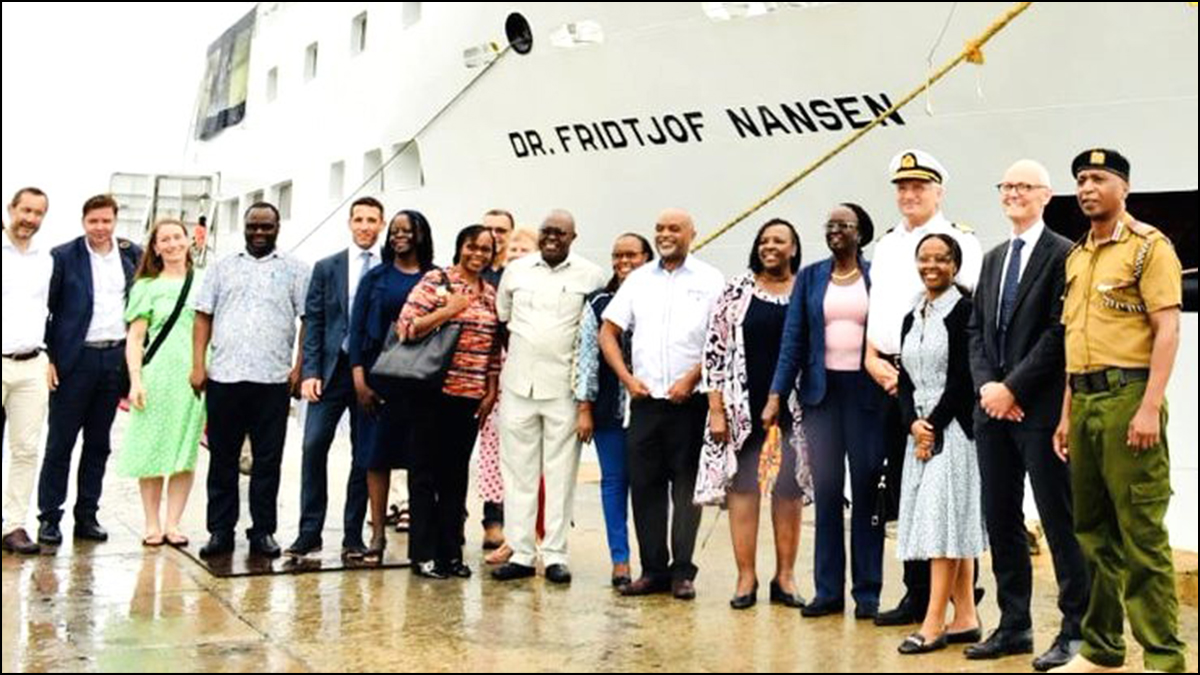
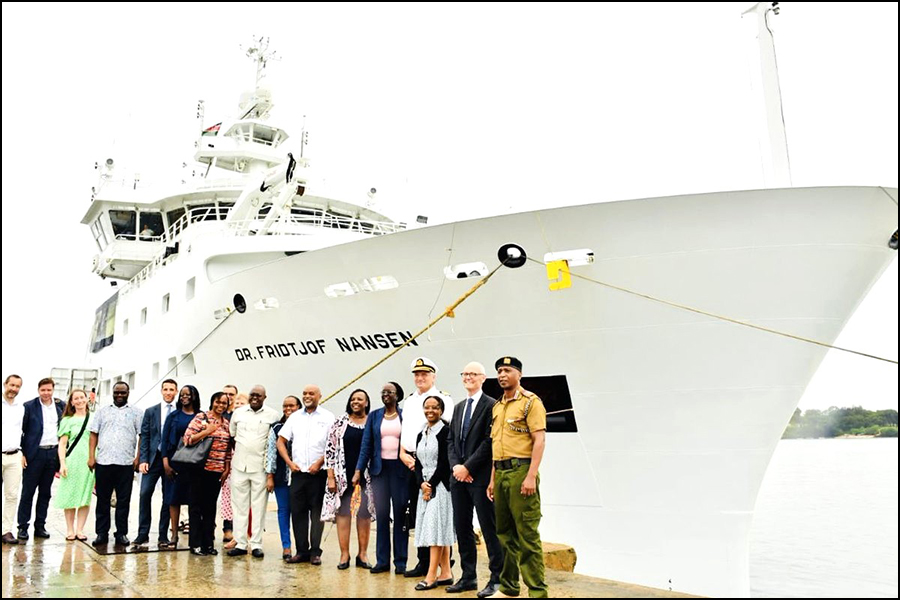
There’s now an apparent stand-off between the UN FAO and the Foreign Affairs Minister Vijitha Herath on the request made by the FAO to have permission for the UN flagged “Dr. Fridtjof Nansen” marine research vessel to enter Sri Lankan waters. Minister Herath is on record saying the request would have to wait till the Committee on Standard Operating Procedures (SOP) for foreign research vessels appointed by him and perhaps chaired by him too, complete their task in formulating the SOP. It was revealed, the SOP Committee is yet to be convened for the first time. With “Dr. Fridtjof Nansen” marine research vessel waiting in Mauritius to set sail to Sri Lanka, numerous discussions the UN had with the Foreign Ministry (FM) since April has only reached the point, where the SL FM agreed to allow the ship to pick Bangladeshi “Scientists” from Colombo, but not get involved in any research in our waters.
res (SOP) for foreign research vessels appointed by him and perhaps chaired by him too, complete their task in formulating the SOP. It was revealed, the SOP Committee is yet to be convened for the first time. With “Dr. Fridtjof Nansen” marine research vessel waiting in Mauritius to set sail to Sri Lanka, numerous discussions the UN had with the Foreign Ministry (FM) since April has only reached the point, where the SL FM agreed to allow the ship to pick Bangladeshi “Scientists” from Colombo, but not get involved in any research in our waters.
What’s this whole calamity over a FAO marine research ship requesting permission to enter Sri Lankan waters? Someone somewhere at the helm of the Foreign Ministry, or the Foreign Minister himself has wholly misinterpreted the issue of country owned research ships visiting Sri Lanka and the moratorium that was imposed by President Wickramasinghe barring foreign research ships.
Sri Lanka was pressured by India and the US to curtail if not stop Chinese research ships from docking in our ports in the past few years. Special concerns were over the 02 research ships “Yuan Wang 5” that docked at Hambantota in early 2022 during Gotabhaya’s presidency and “Shi Yan 6” in October 2023 at the Colombo port during Wickramasinghe’s presidency. It was said, these 02 research ships had the capacity for surveillance and monitoring the region. Under pressure especially from New Delhi, President Wickramasinghe decided to impose a one year moratorium on foreign research ships visiting Sri Lanka, effective from early January 2024.
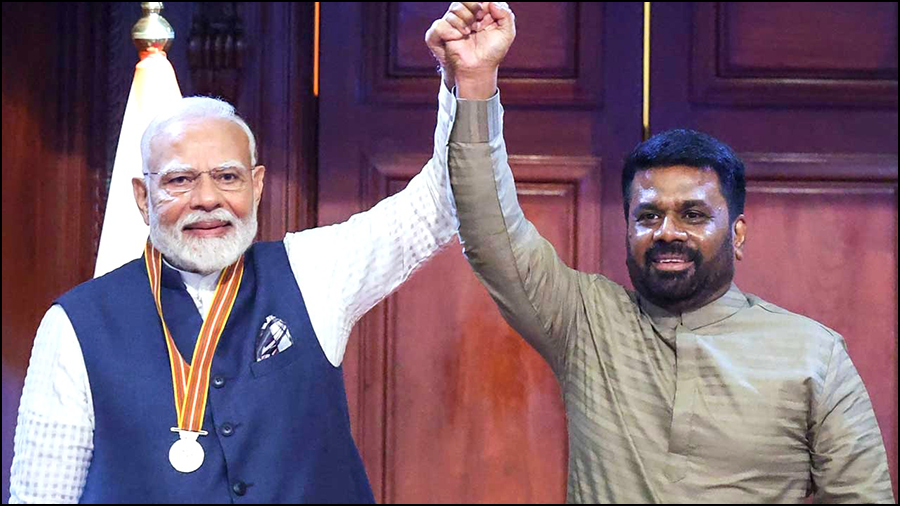
The Wickramasinghe moratorium came to its end on 05 January 2025, as the JVP-NPP government did not extend it further. Reason to allow the moratorium to lapse in January, may have been on a strictly confidential agreement reached to have a separate bi-lateral agreement on defence, during President Anura Kumara’s maiden official visit to India in mid-December 2024. Defence had been an issue discussed with Indian authorities during President Anura Kumara’s Indian visit, wrote Dr. Samatha Mallempati of “Indian Council of World Affairs” in May 2025. A defence MoU would thus make the moratorium irrelevant thereafter. PM Modi was to visit Sri Lanka 04 months later in early April this year. One among the many MoUs the 02 governments signed during PM Modi’s visit was the first ever Memorandum of Understanding (MoU) on “defence co-operation”.
India began working on a defence strategy for Indian Ocean Region (IOR) since the conclusion of Sri Lanka’s North-East civil war in 2009. New Delhi was very much concerned over President Rajapaksa’s post-war association with not only China, but with Pakistan too. Both with long time hostile border disputes with India. Contributing an article to “Stimson.org” on Pakistan-Sri Lanka relations in March 2021, two researchers on South & East Asian geo-politics Riaz Khokhar and Asma Khalid wrote, “In 2016, Pakistan signed a defense agreement with Sri Lanka to provide Colombo with eight JF-17 fighter aircrafts. Pakistani and Sri Lankan armies and naval forces have also regularly interacted through port calls, military and naval training and exercises, and defense workshops and seminars. In the recent high-level visit to Colombo, the Pakistani premier offered a USD $50 million credit line to Sri Lanka to further enhance defense and security partnerships.”
South Asian geo-politics did have new developments with post-war Sri Lanka compromising its economic needs with defence and national security in challenging the Tamil Diaspora canvassed US-Euro resolutions at UNHRC Sessions. Rajapaksa government was required to accept independent international investigations on war crimes and crimes against humanity, with many top military officers named. Pakistan stood with Sri Lanka, voting against all such resolutions at every UNHRC Session, while the Rajapaksa regime joined the Belt and Road Initiative of China, and was financially supported by China. Financial support that led to the popular adage “Sri Lankan type Chinese debt trap”.
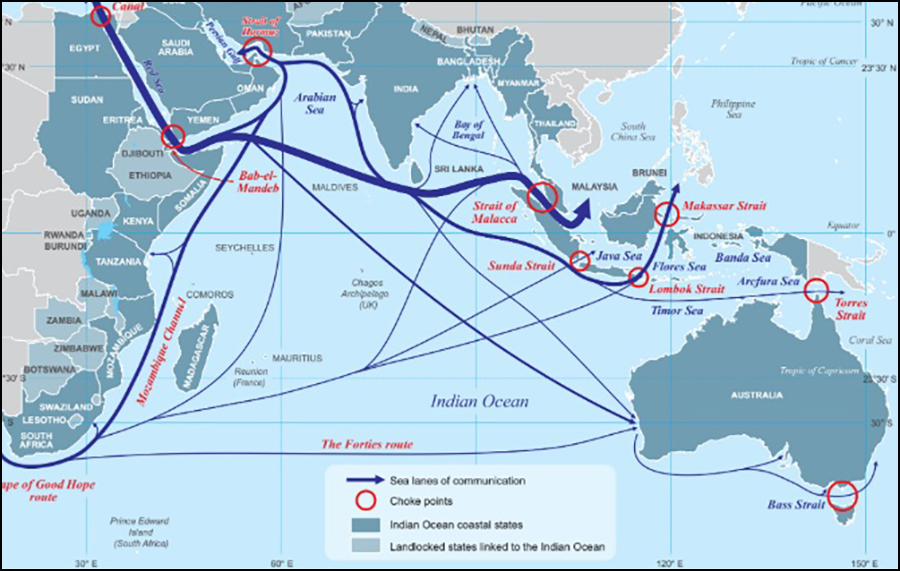
India has since been working towards establishing its dominance in the IOR keeping Sri Lanka as its focal point. Highlighting the geo-political importance of Sri Lanka, Dr. Samatha Mallempati wrote, “Since the region accounts for fifty percent of world maritime trade and seventy percent of global trade in oil and gas, there is a greater need to safeguard the sea lanes of communication. The increasing strategic significance of island states in the region therefore assumed importance. The island states such as Sri Lanka is looking to play a much bigger role by leveraging their geographical location.”
The perception in New Delhi that Sri Lanka is leveraging its geographical location to define geo-politics in the IOR, was what paved for the MoU on defence co-operation India signed with Sri Lanka, that for 05 years would provide India adequate space to influence Sri Lankan geo-politics in its favour. But the fact is, all these agreements and treaties are about IOR peace and stability and the influence “foreign countries” may have in it. The Sri Lankan moratorium was also about research ships of foreign countries, docking in our ports.
How would the UN flagged marine research ship “Dr. Fridtjof Nansen” interfere in IOR stability and peace? The request to FAO for marine research in our waters had gone from the SL Government, never mind who led the government. FAO is focussed on sustainable fisheries management and this modern, fully equipped ship for marine research is used mainly in African and Indian Ocean waters in collaboration with NORAD to support developing countries with research based fisheries management. That perhaps was the only reason for the previous government to request the FAO to visit Sri Lankan waters. Mind you, that request for FAO to undertake marine research in our waters, went out while the moratorium on foreign research ships was fully effective.
Whatever the bureaucracy at the FM says, a seasoned politician like Vijitha Herath who had been in parliament for 25 years to date from year 2000, should know the difference between this UN flagged marine research ship and other research ships owned by individual countries. Anything flagged as “UN” is common property of 195 sovereign nation States who are UN members. This ignorance therefore very clearly exhibits the JVP/NPP leadership as the most intellectually timid leadership to have been voted to power since 1948 independence.
Kusal Perera
20 June, 2025

Cabinet approval for online traffic fine payment system – Bimal
Indian entrepreneur delegation meets President AKD (Pics)

NTC approves 0.55% bus fare reduction
Trending
-
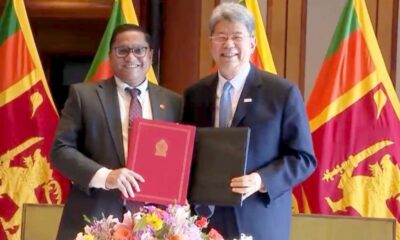
 BIZ3 days ago
BIZ3 days agoSri Lanka’s largest FDI project in limbo as Sinopec H’tota refinery face delays
-
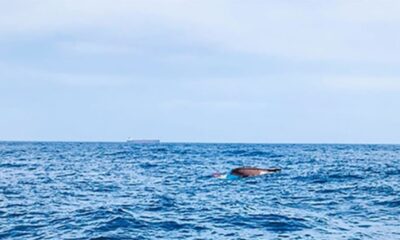
 News3 days ago
News3 days ago2 missing as fishing boat capsizes off Tangalle
-
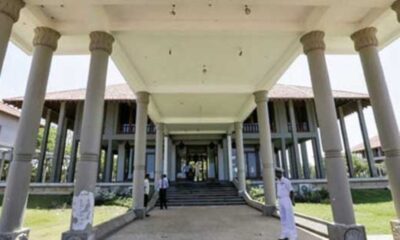
 News3 days ago
News3 days ago8 persons claim ownership rights to Jaffna’s Presidential Palace
-
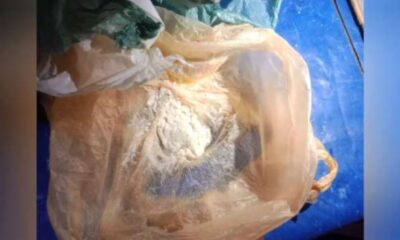
 News2 days ago
News2 days agoLorry carrying explosives seized on Habarana-Trinco road






